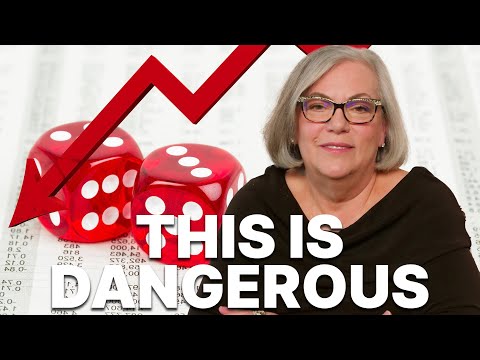Understanding and Trading Fibonacci Retracement Lines | Technically Speaking: Advanced Charting

[Music] good afternoon and welcome everyone my name is cameron may it's friday afternoon that means that it's time for the weekly discussion of technically speaking advanced charting techniques i'm filling in today for pat uh mawali and so we're going to take a quick look at a tool on the the thinkorswim charts platform that i think a lot of people might use some traders turn to this tool for an indication of where they might find areas of support and resistance when they're not otherwise obvious on a chart it's a tool known as fibonacci retracement tool we're going to be diving into it i already see a lot of you chatting in saying hello hello there jack and edward eric eve mike uh um grace everybody thanks for joining me today i certainly appreciate your attendance and your contributions if you're here for the very first time i want to welcome you as well and if you're watching on the youtube archive after the fact enjoy the presentation be aware that you're invited to join us live on friday afternoons all right so let's get into it very first thing that we always do is positive consider the risks associated with our investing because risks are real this is important information to bear in mind options are not suitable for all investors while this webcast discusses technical analysis other approaches including fundamental analysis may assert may assert very different views all investing involves risks including the risks of loss any investment decision you make in your self-directed account is solely your responsibility and uh there's an overview of your options greeks so uh yeah walter we're going to be discussing fibs rich says hola cameron october 1 says are we starting now yes we are starting now so let's go right to the platform and we're just going to start with the s p 500 and i thought this would be an appropriate topic to discuss today because the s p is just pushing higher and higher and higher we've just recently touched all-time highs within the last three trading sessions so for some technical traders they might recognize a bit of an issue here we will see that the that the market's been pushing up and up and up and maybe that a technical trader is planning a new trade for let's say a bullish entry but they don't know where to plant as a target that can be a little bit difficult because you know some traditional techniques techniques might be to look back to history and look okay where have there been price ceilings before and this could apply to an index it could apply to an individual stock but there's nothing to look at back here in history at least not on a six-month chart and and we know even if we change this to a longer-term chart what we're going to be confronted with on the s p but let's switch this over to a three-year weekly chart and you'll see we have the same issue there's nothing that's obvious on the chart where a trader might say yes that price level might be the next area for a target for a new bullish entry where we might take some profits says miguel i'll say that in a little bit okay imagine if cameron says we'll set you loose yeah i'll be doing that in 20-25 minutes from now but we're confronted with this issue and so some some good some technicians uh created an indicator that might help us address this let's go to a shorter term time frame again i'm gonna switch this back to a six month daily for today's discussion we're going to click ok we're going to talk about using fibonacci so let's give ourselves some blank space down here in our scratch pad to have a quick discussion and as i lay out the basics of fibonaccis why don't you chat and let me know how many of you and we have 129 people watching this webcast right now and if you how many of you have used fibonaccis in one form or another well they're in your paper money under real money it doesn't matter which but this this is just just let me know is this a tool that you've used before because for those who are new it might be interesting to see well is this actually something that has broad application so while you're chatting that in let's talk about the structure of fibonaccis so fibonaccis are actually you know what i'm going to do let me draw a quick fibonacci on here so you can look at an example of one then we'll talk about how that's constructed so let's go to our drawings a couple of ways ways that we can access is click on the drawings heading up in the upper right hand corner switch down to drawing tools i'm going to pop here to the fibonacci retracements tool that's the one that looks like a little percentage sign so we'll select that and then to draw the fibonacci you can either draw from the bottom up or from the top down but where do we typically draw fibonacci well for some traders what they'll look for is when they get an explosive move to the upside this is for a bullish fibonacci that might attract the attention of other investors right when things are exciting it might attract new money well once things have already run up some distance there might be expected a bit of a pullback right some profit taking but when we see this advance this is where we might recruit that where we might recruit that fibonacci tool in this case i'm going to draw from the top down and there's an important reason for that we'll talk about that in just a moment but as we draw that fibonacci what you'll notice is that this tool automatically draws in a series of lines that may serve as support and resistance areas right but okay so let me let me look over here in our chats i see a number of you chatting in to answer my earlier question yep i've used it nope never used it i have fibs yes i use it no some not a lot no uh yes but not an expert perfect okay well let's try to get you if you're brand new to this let's try to get you the competence if we're if you're already competent let's try to move up to expert level okay maybe that's a little bit ambitious but he the this tool is built around what's known as the fibonacci sequence it's a sweet it's a it's a mathematical sequence of numbers it was discovered i i try to i'm gonna have to go back and get the the precise creation of this because i think i described it once and said nope somebody else someone someone that was watching said actually there are even earlier examples than that that's okay but here's the fibonacci sequence it starts with the number zero and then we go to one and then we have one again how did we come up with that well actually zero plus one is one all right now we take the last two numbers in the sequence add those together and it generates the next number zero plus one is one one plus one is two one plus two is three three two plus three is five and we just carry that out let me just punch in some quick fib numbers here and if you catch me making an error in my math just call me out on it but there we go and on that fibonacci sequence goes and the reason there are actually a number of reasons why this might have significance but in mathematics and in biology they've actually noticed some potential applications for the fibonacci sequence number one is that there are there are a number of ratios that can be generated maybe we'll explore some of those today ratios that can be generated by this fibonacci sequence that can be displayed numerically they can also be displayed graphically and it's interesting that um this sequence actually shows up for example in nature in the way that a tree branches out or in the way that a nautilus shell increases its chamber size as it coils around and around or in the arrangement of a sunflower of a group of sunflower seeds on the face of the of the flower it turns out the arrangement of those flowers uh create a fibonacci sequence okay but in any case what uh what technical traders have observed is well maybe if it has mathematical implications maybe if it has a biological or nature implications possibly could there be applications for trading well there might be so let's look at let's look at some of these numbers now first well some other numbers associated with this sequence there's actually a number known as the golden ratio what is the golden ratio well the golden ratio will is generated by taking any number in the sequence and dividing it by the number after that so let's bust out our calculator here and just take 34 for example divide that by 55 and we get 61.8 or 0.618 or if we were to take 55 divide that by 89 we get 6.618 and you'll notice the larger the larger the numbers go the more precise this number becomes but we really start to zero in on 0.618 now if you'll notice this golden ratio actually appears over here all right so what are these other numbers in the sequence well maybe it's instead of taking the um one number and divided it by the number just to its right or the next number in sequence we might take another number and then go to sequential increments over so for example let's take 34 and divide that by 89 and what do we get we get 0.38
well you'll notice here 0.382 0.382 okay well how far can we take that we can we can continue with that uh you know actually rather than explaining the rest of these numbers and going through this i'll let you you can actually go to youtube and type in cameron may fibonacci's f-i-b-o-n-a-c-c-i okay cameron may fibonacci or fibonacci it doesn't matter which and in in that video you'll see me go into the rest of these in great detail and i go deeper into what is the golden ratio what's its significance or whatever but in any case what we wind up with if we start to apply those to a chart and if we start to maybe observe historical behaviors in price activity is that it seems with an up enough observation that this sequence seems to have some significance in the way that stocks behave is it a guarantee that stocks are always going to behave in a fibonacci sequence no it's not but um when we get up when we get a run up like this what some traders will do is they'll draw on this fibonacci line so let's shift into application for trading first thing that it might do for us when we see a strong advance for example on a bullish index or bullish stock the first question might be well if i'm waiting for my opportunity i'm just talking generically as the trader if the trader is waiting for maybe stocks to blow off a little bit of steam to do a little bit of retracing take some profits how long might they wait and when i talk with you about fibonaccis very commonly you'll see me talk about how some traders will wait for stocks to retrace back down to about somewhere between the 61.8 and the 50 retracement level for some reason that seems to be a pretty a pretty commonly repeated area of retracement and donald says fibs are also using cabinet making carpentry picture frames etc i'm going to lean on your expertise there i don't have expertise in any of those fields yeah ricardo not my not my last name but here we are a trader might be looking at this and wondering well how far down is spx likely to pull back during this let's say profit taking period well let's let's do some quick fibonacci analysis of previous advances let's say that we're anticipating maybe we pull back somewhere down into that range has it done that at all recently this is not analysis that i performed recently so let's have a look let's right click here i'm going to clear our drawing set and i'm going to draw another fibonacci and here we're going to select that retracement tool again go to the top of a historical advance so this is maybe the most recent run up that we've seen not including this one that we're in right now let's click at the top of that move and pull down to the bottom and look at this we ran up where did the markets retrace as profits were taken between the 61.8 and 50 range so as just just put yourselves in the shoes of a self-directed investor who's using this fibonacci tool and they're trying to gauge where might i start take start to take new bullish positions could this have some value for that trader it could again it's not a guarantee that it's going to work out perfectly let's give it another test let's right click on this let's just clear that drawing set let's draw another fibonacci here's the top of another advance i'm going to pull down to the start of that one boom and where did we retrace what do you know between 61.8 and 50. right click let's remove that
drawing here's another advance let's go to the top of that advance advance go to the bottom where did we retrace right down between the 61.8 and the 50 again so we see this pattern repeat itself uh pretty frequently so for a trader they might use that as a gauge on an index maybe as a gauge for when to start looking for bullish positions overall for an individual security it might be when to maybe take new positions on that security directly all right so that's one potential application we've gone one step into the planning of a trade what's another step in the planning of a trade well where might we take profits let's let's talk about that so let me clear this drawing let's just remove that drawing and i'm going to go to this most recent advance that has already completed okay so this little move right here this one we're in the middle of it i'm going to click at the top and remember i said we're we're going to draw from the top down and i said there was significance in doing that here's why why do we draw why don't we make our first click at the top well when we click at the top and move toward the bottom you'll see prices expanding toward the um toward the top of the chart you see that look at this accordioning effect you see that what that's doing is setting up potential target zones based on the fibonacci sequence so here was our most recent advance of an already established upward sloping market we got to pull back down to maybe what we might consider a target zone or a target entry zone where might be a potential exit that might be that we call at what we call a fibonacci extension and this 161.8 still considered to be the golden ratio what we've done is we've just added one one fibonacci unit to that so instead of 61.8 now at 161.8 and that might establish where the next upswing may start to run out of steam so how's that established that one's actually pretty simple we just take 100 percent add it to a 61.8 percent retracement there we go and miguel in this case it nailed it right now i didn't i didn't analyze this before i launched the webcast it just worked out that way okay so there are now jack says you'd want to reference the time period to forecast expectations and that's true jack so how am i to let's say someone who's placing a trade that's time sensitive in some way anticipate how long might it take to get up to this level well what they might do is measure the disk the amount of time that it took to make the initial move that generated the interest in the first place so in this case we started here on may 12 and it advanced and finally hit the peak on june june 15th so a little bit more than a month so we might anticipate about a month maybe a little bit more for the upswing there we go so some fairly you know some potentially nifty applications here for fibonaccis can this be applied to individual stocks yes on a regular basis for some traders it is can it be applied to downward sloping stocks let's find something that's been going down recently like disney's been heading down this is certainly a potential as well let me let me remove this drawing when we see a big move to the downside in this case what we might do there is one important adaptation that we need to apply here and that is we're going to draw from the bottom up so i'm going to go to the bottom of this down move move to the upside but then the analysis is the same we've made a strong move to the downside if we get a rebound where might be our target zone between 61.8
and 50. and look at this again just a random example i brought up because i knew disney had been going down but where did the rally kind of falter it kind of petered out right there now where does this projectile move to the downside right there where did the selling off end right at that fibonacci low again i can state this very truthfully i did not plan this example before this launch i just wanted to throw one on here and see and give you a demonstration but there's an example of how a trader might start to use these fibonaccis so we've applied this to an individual index we've applied this to an individual stock and we've discussed the generation of the or the the construction of the fibonaccis this is something that definitely requires some practice some repetition it requires some application so what i would suggest you do go to your own paper money and find here's what you here's what you'll probably be looking for look for a stock that either just made a strong move to the upside or a strong move to the downside and that's where we might start to draw those fibs and then we see if we can get uh some anticipation of how far we might pull back against that move and then where that stock or that index advances after that pullback right that's it everybody hope you uh you don't mind the intrusion as i step in here to help out a coach who had other com other commitments but it is time for me to set you loose there you go somebody said i was going to say set you loose i yep i said it v rice says what time frame works best for fibs all i can say there i can't say what is best or what is worse but i will say that there are traders out there applying fibs on really the whole spectrum of time frames right from those one minute charts all the way out to the weekly even the monthly charts okay but yep it is time for me to go everybody thanks for joining me today we accomplished uh what we set out to do today i just wanted to give you a quick introduction to the fibonaccis how they're constructed how they might be applied got that done go enjoy your weekend we have uh maybe one or two more webcasts left in this afternoon so you're certainly invited to join us for those but hope everybody has a great weekend i will see you in my regularly scheduled sessions that start on monday and run through thursday but um you can join me on monday tuesday wednesday thursday or friday or if i fill in again on a friday that'd be fantastic but as we go remember the risks are real we did use real examples in today's discussion it's not a recommendation or endorsement of those securities or those strategies and i'll look for you in another webcast so whenever i see again until that moment arrives i want to wish the very best of luck happy investing bye you
2021-07-25 00:36


